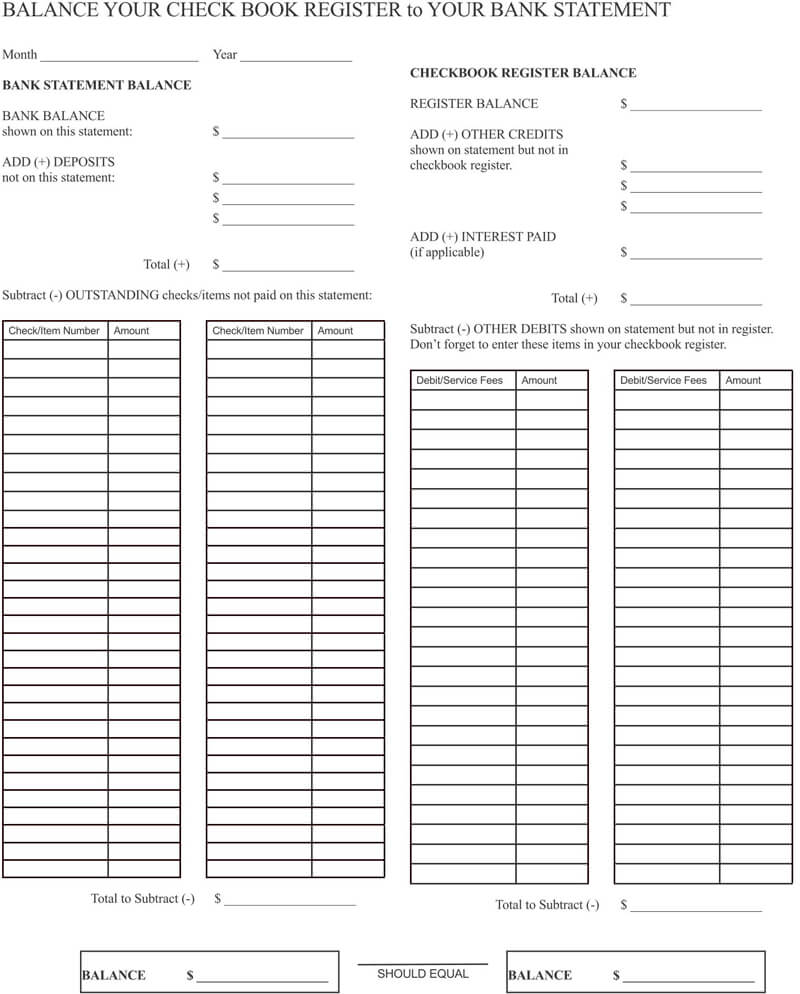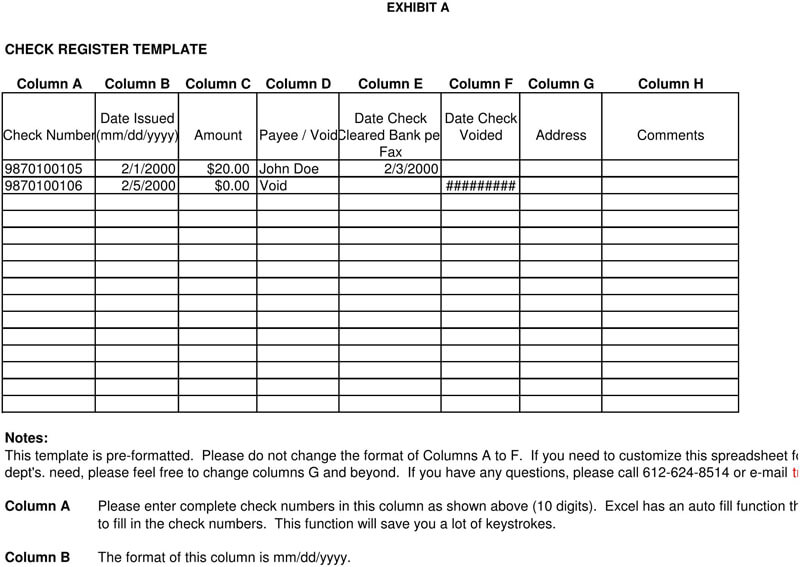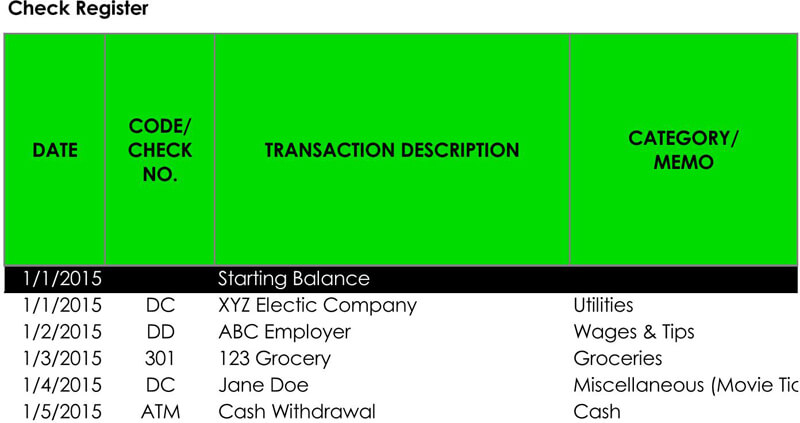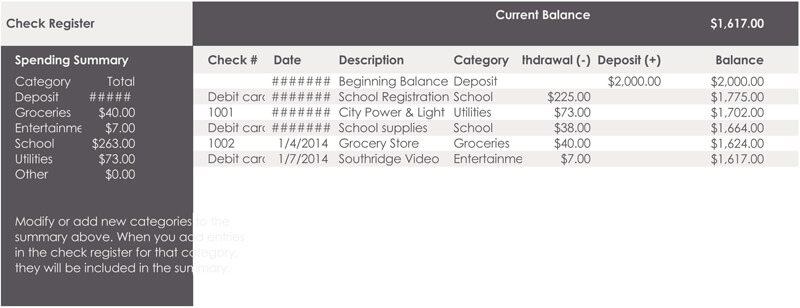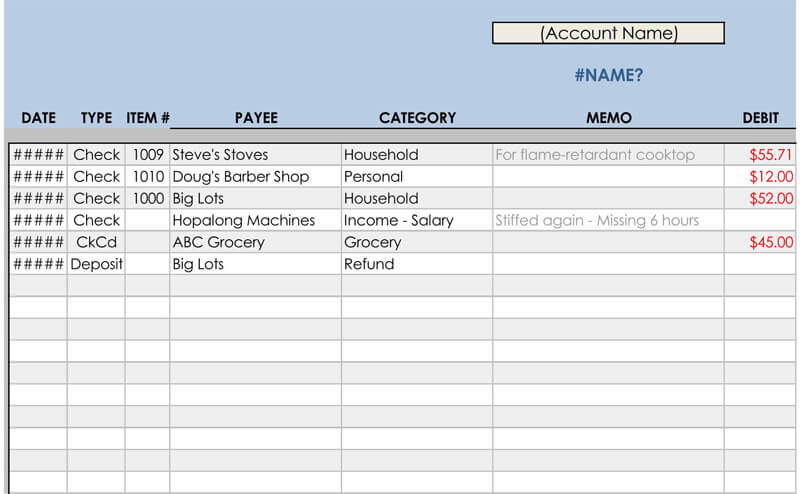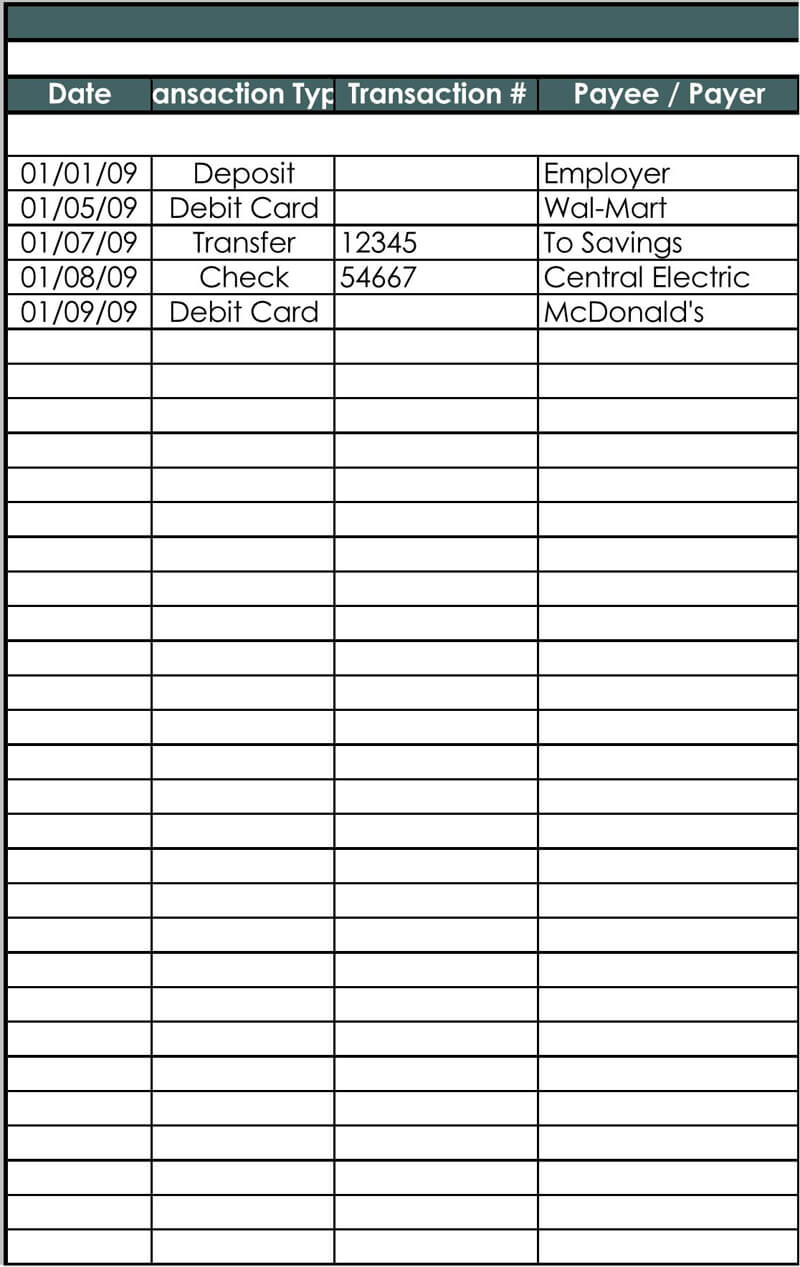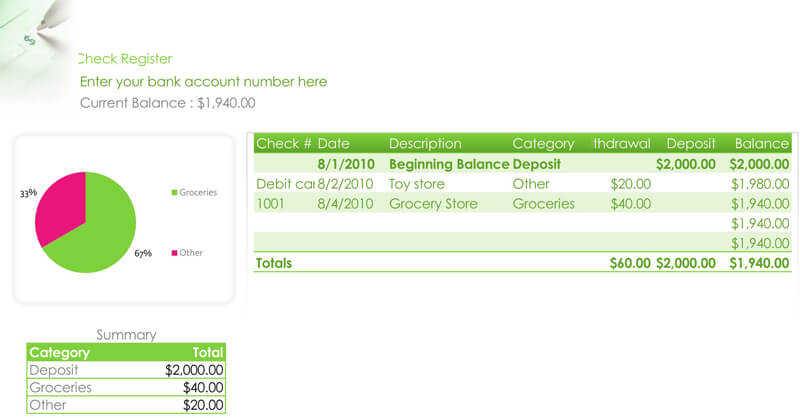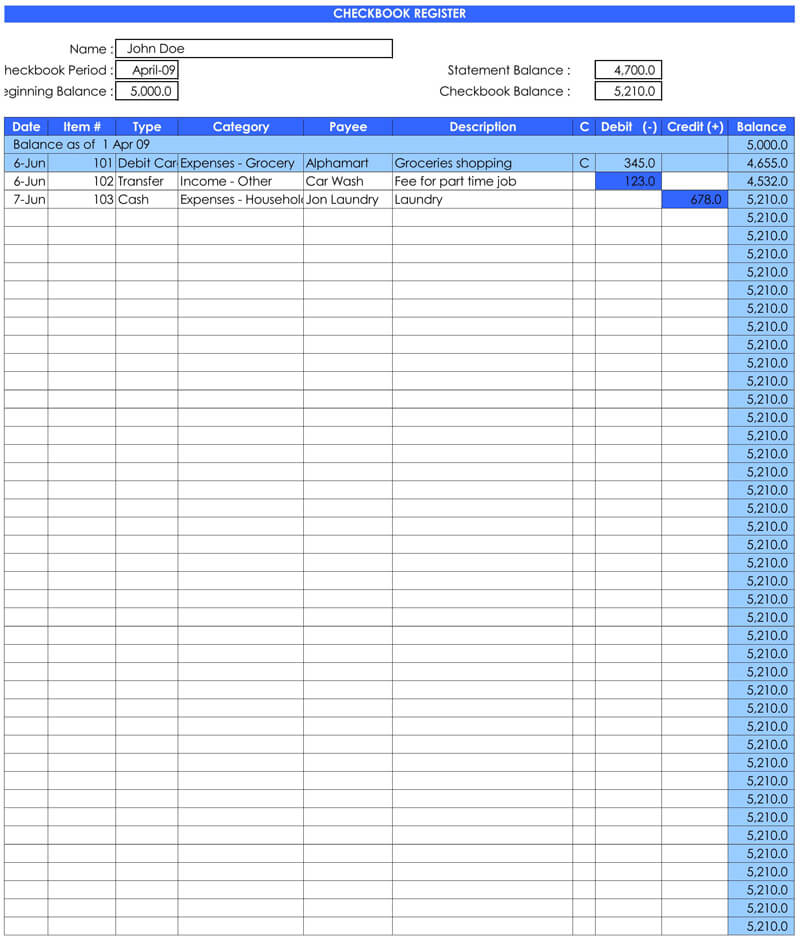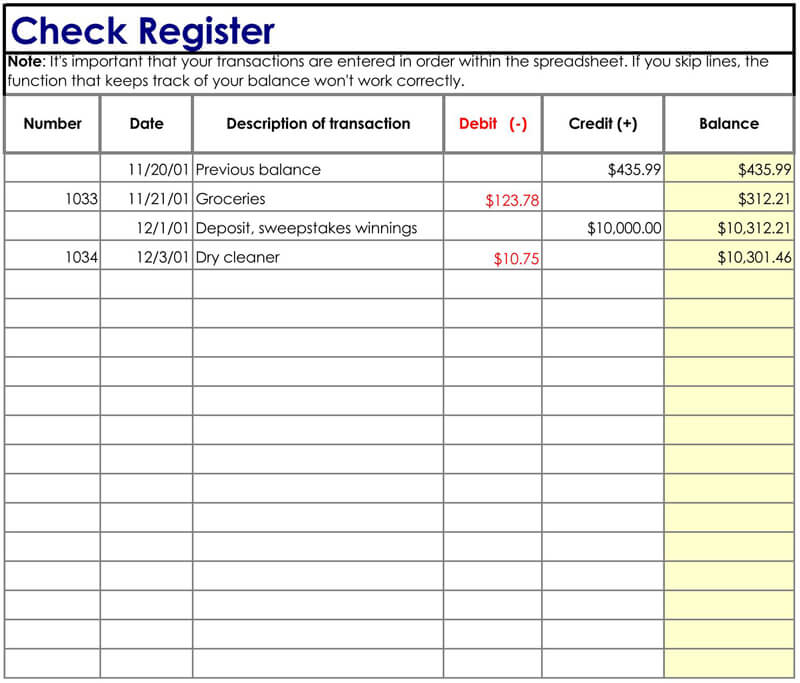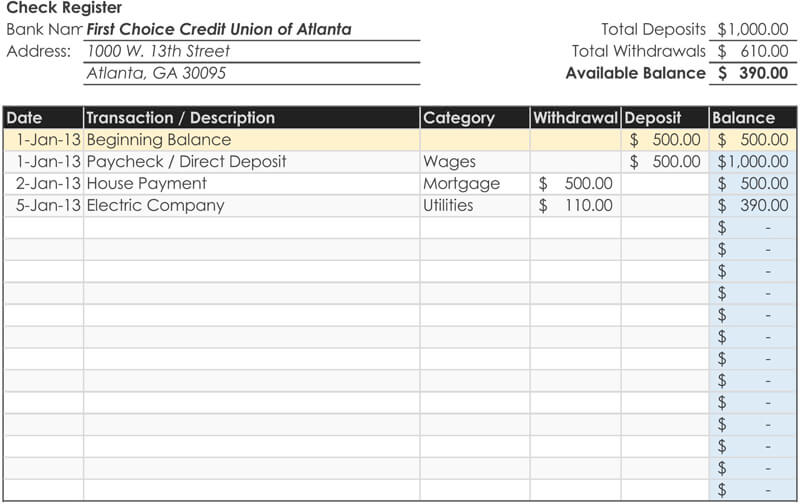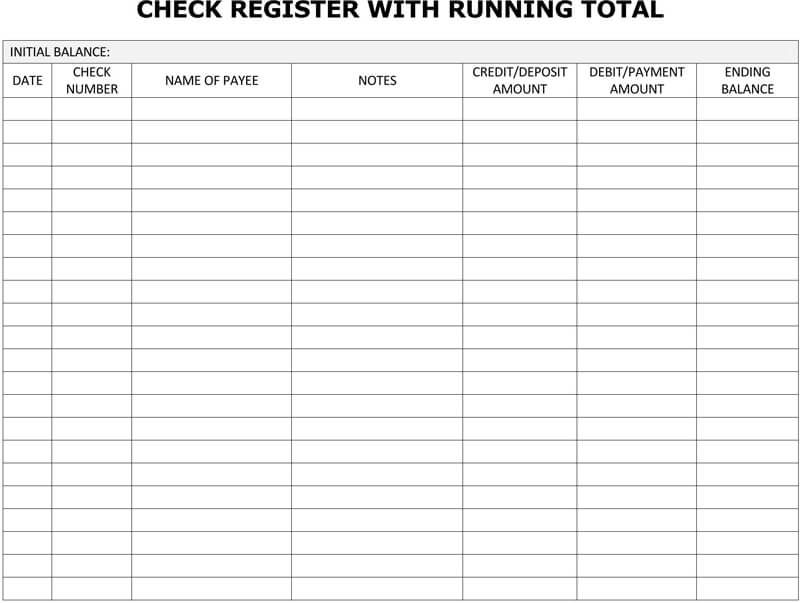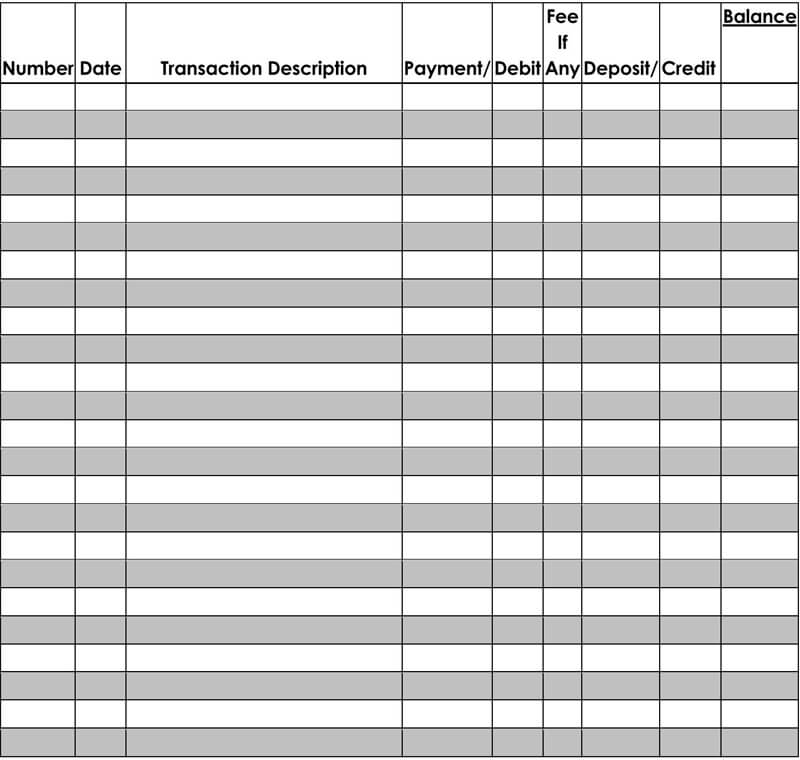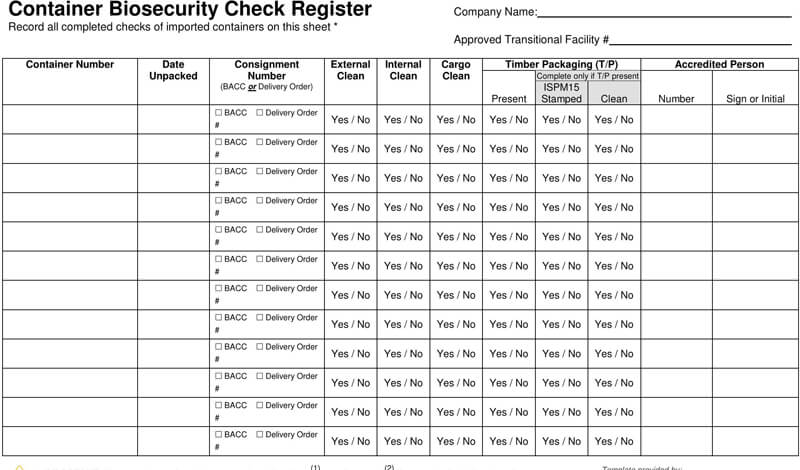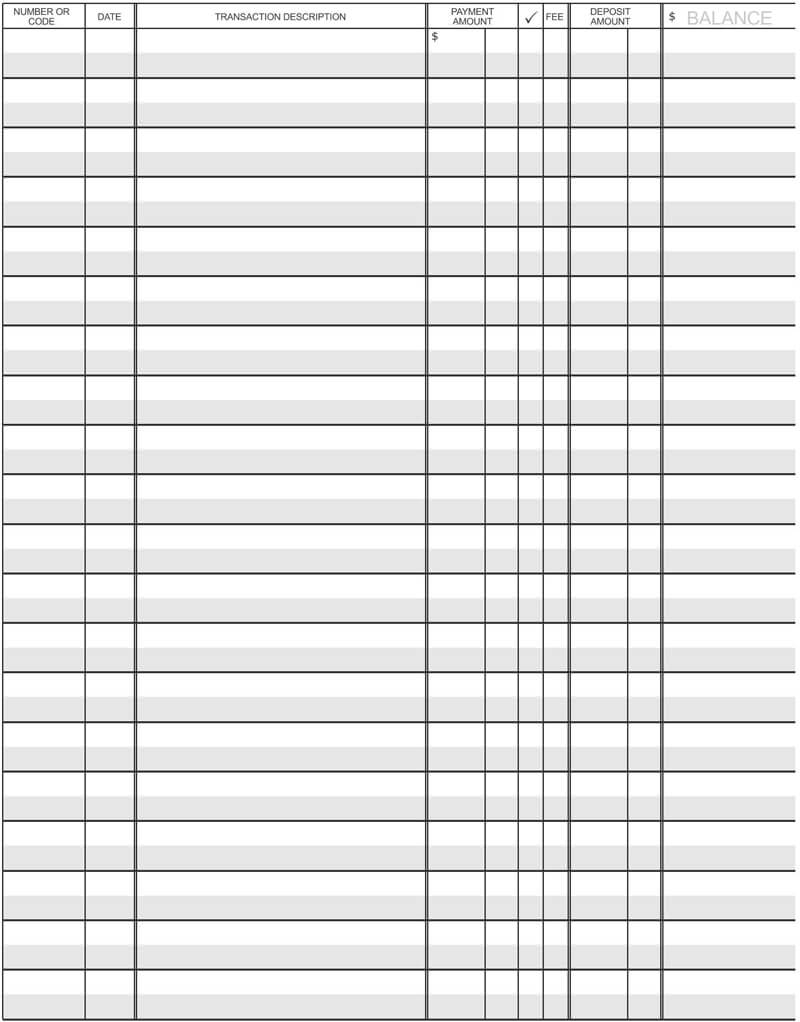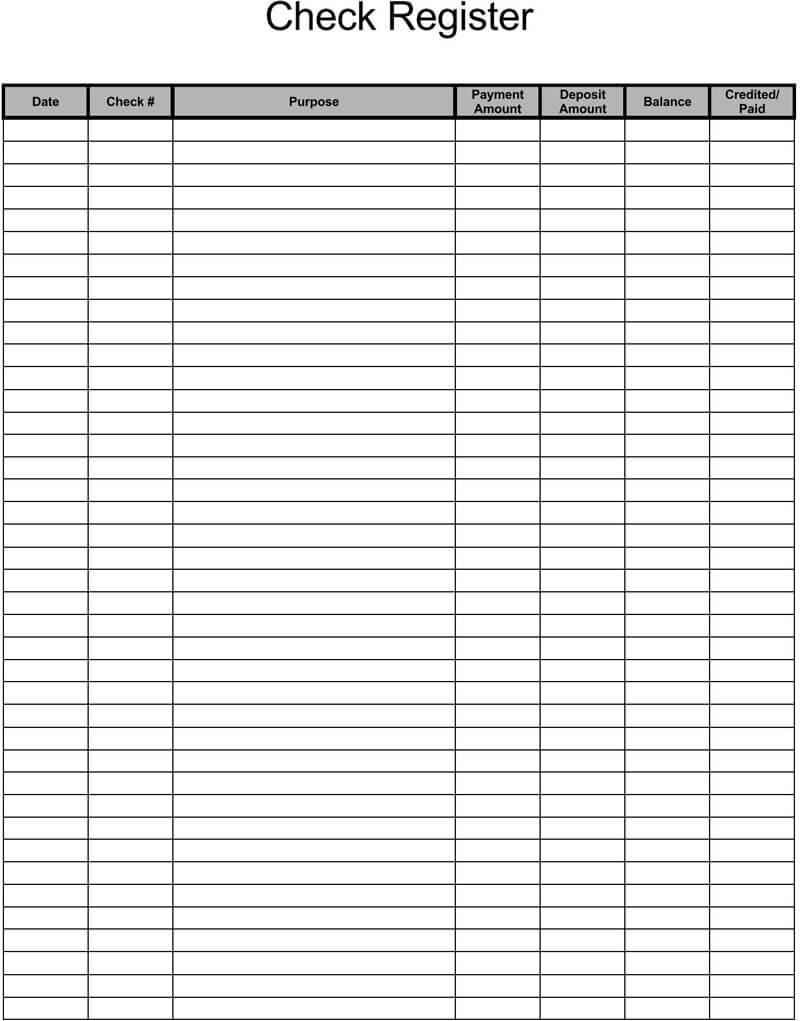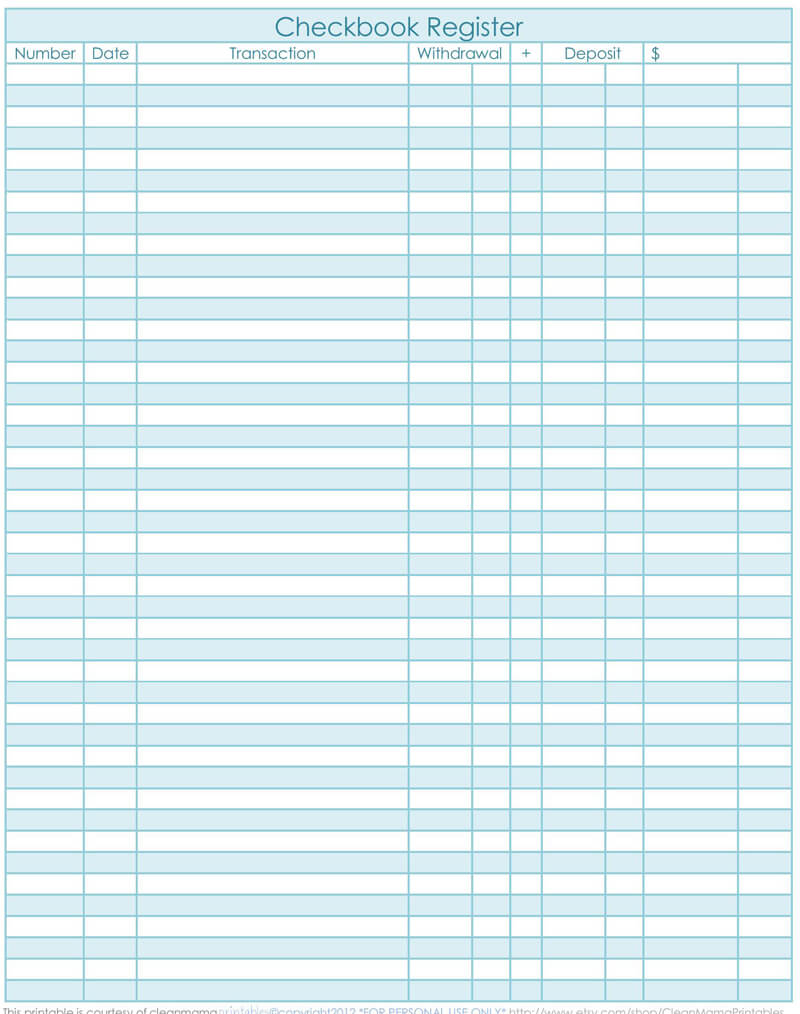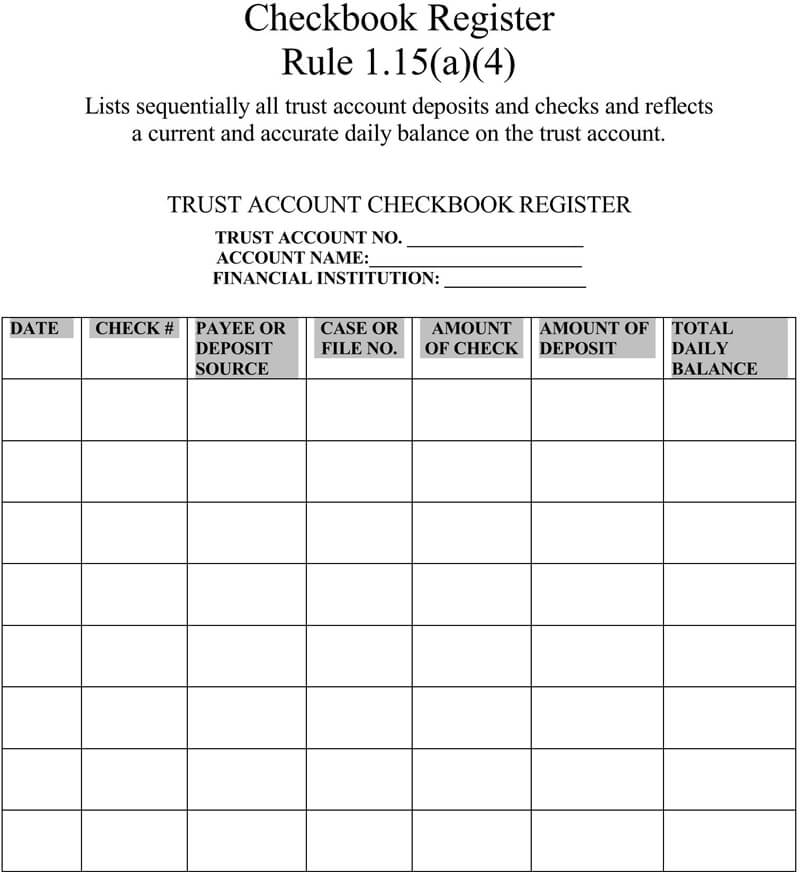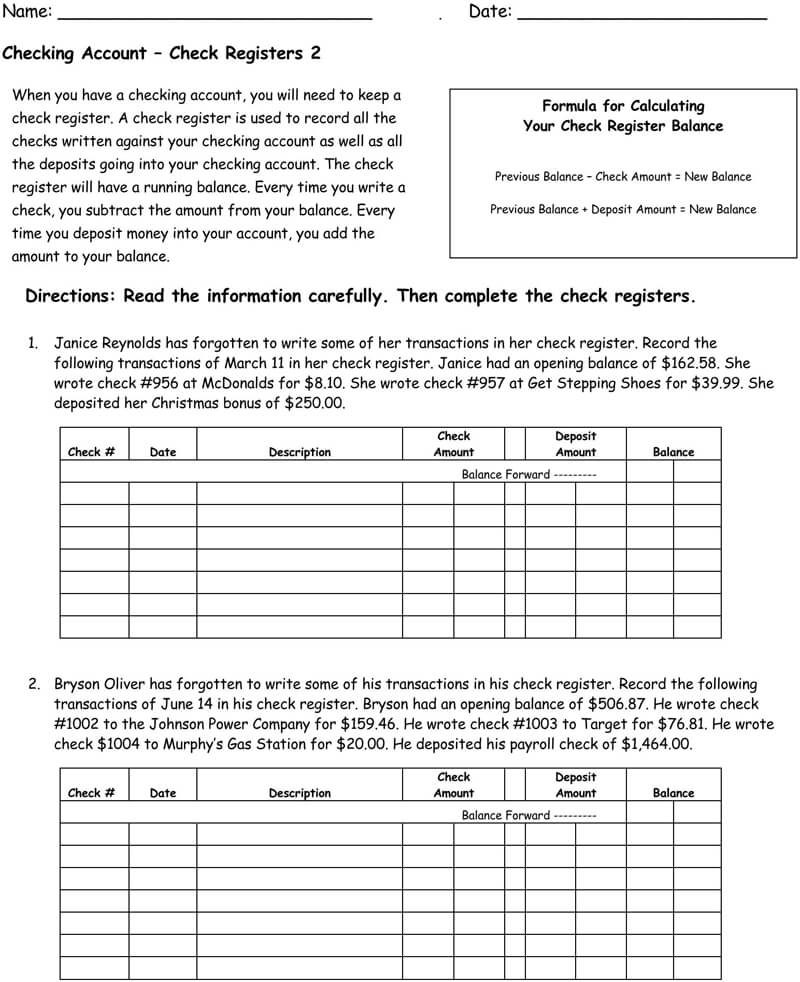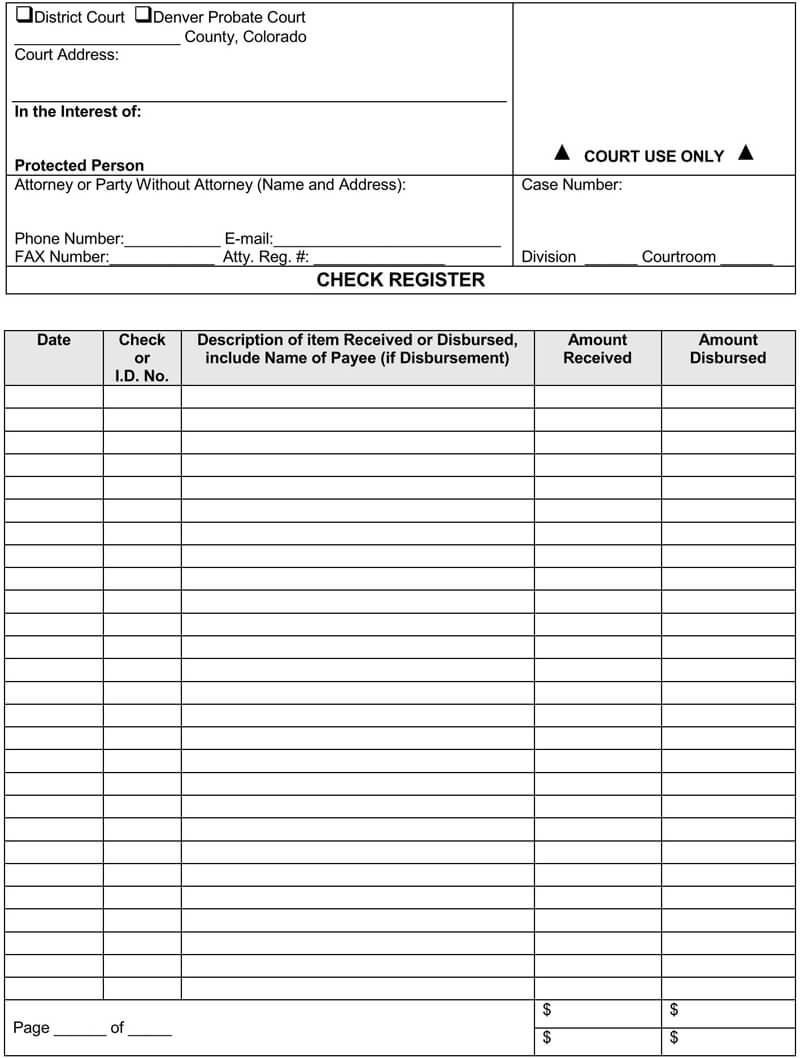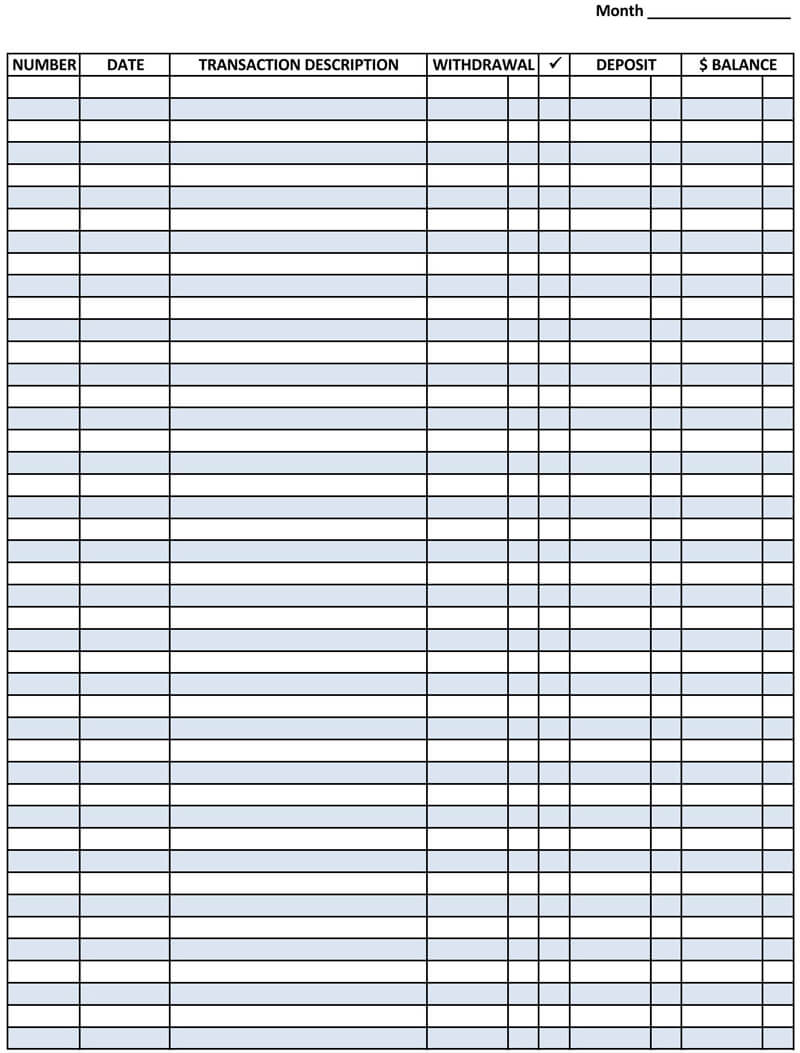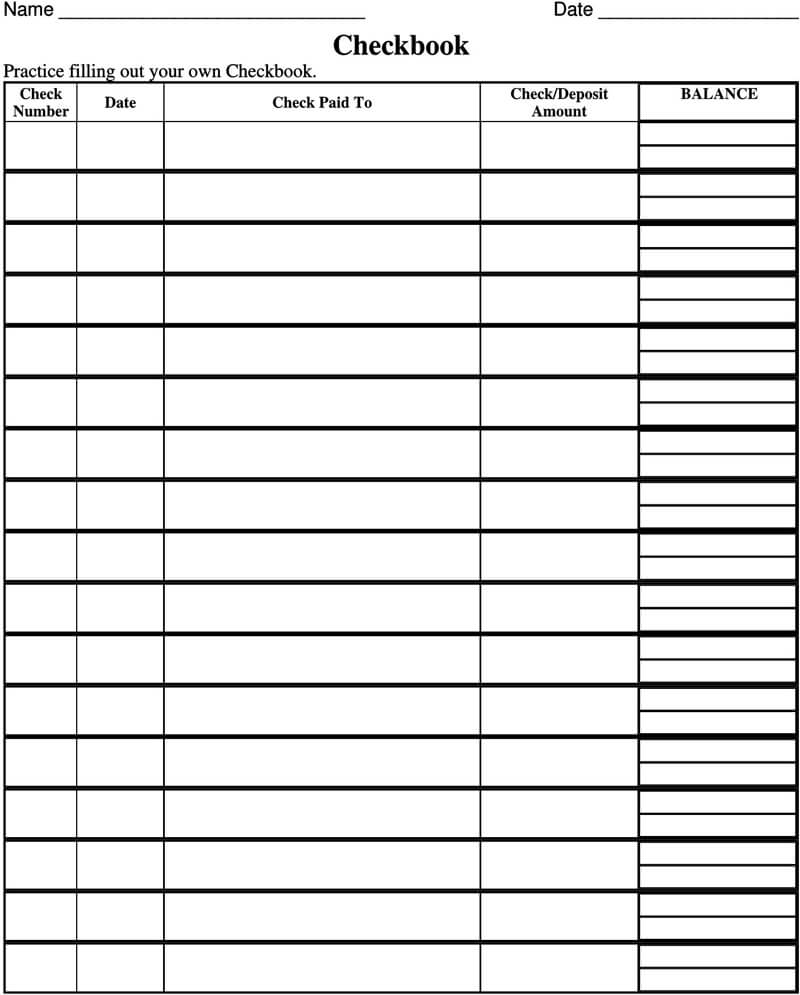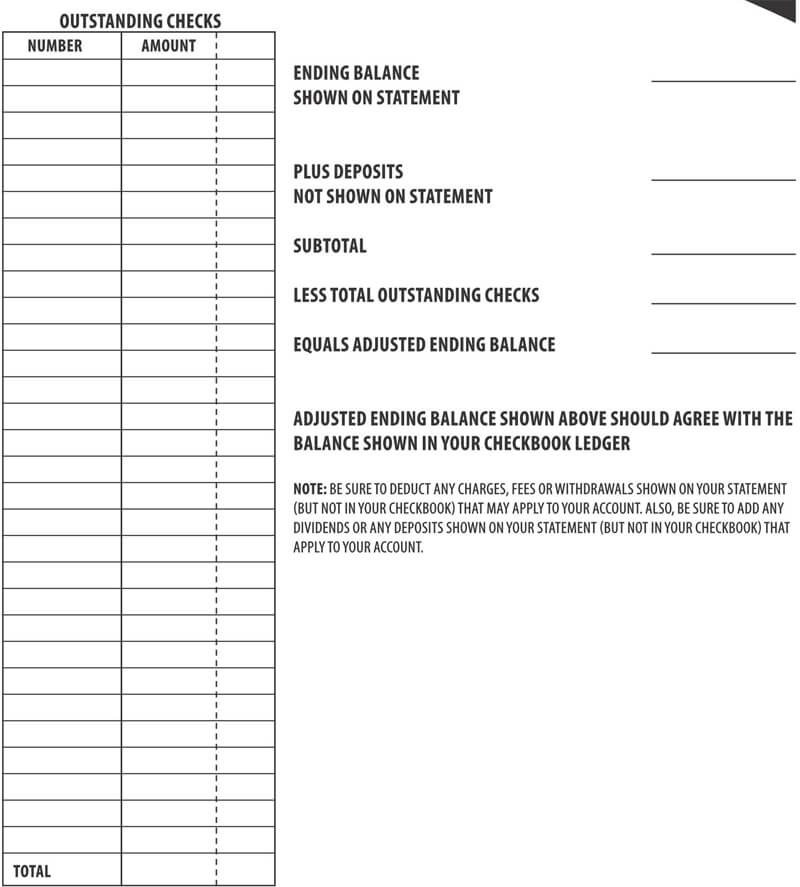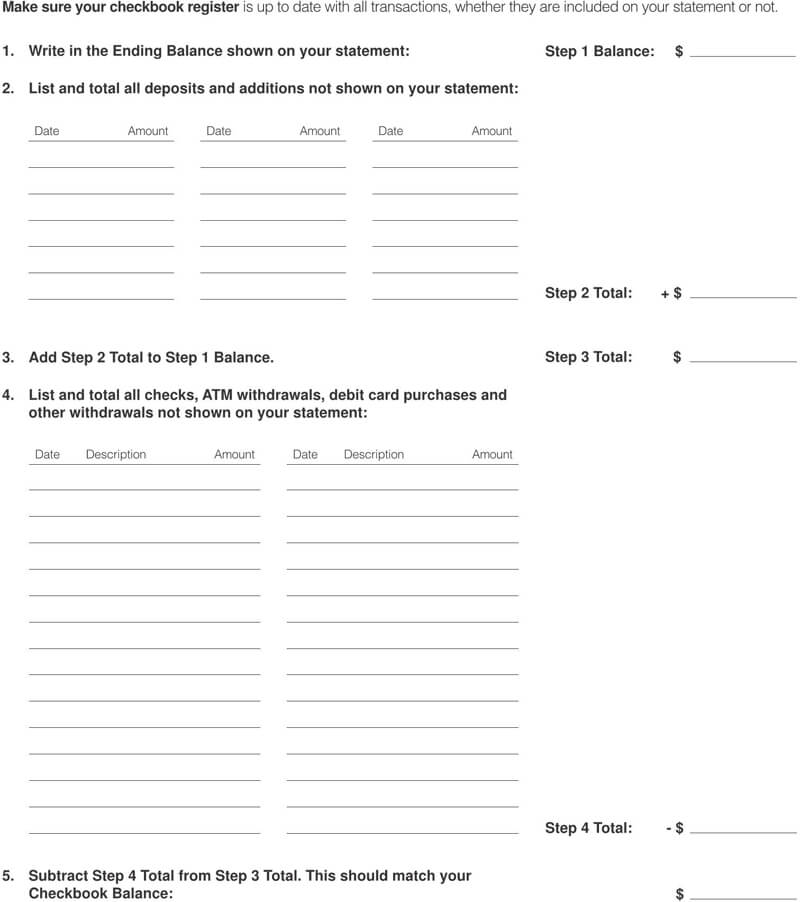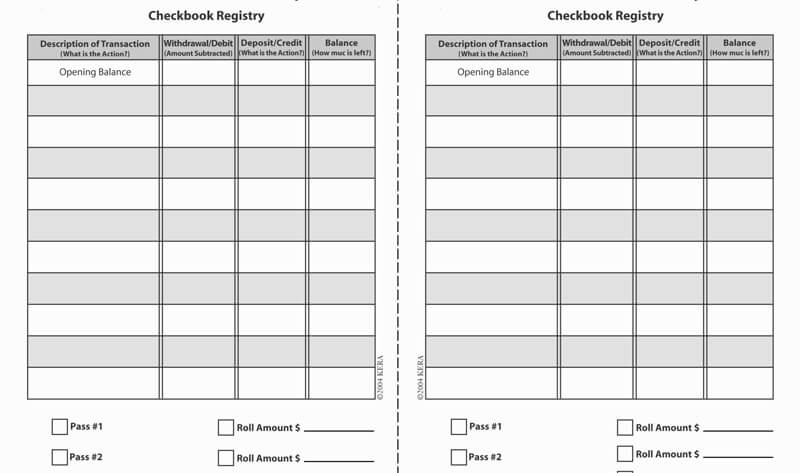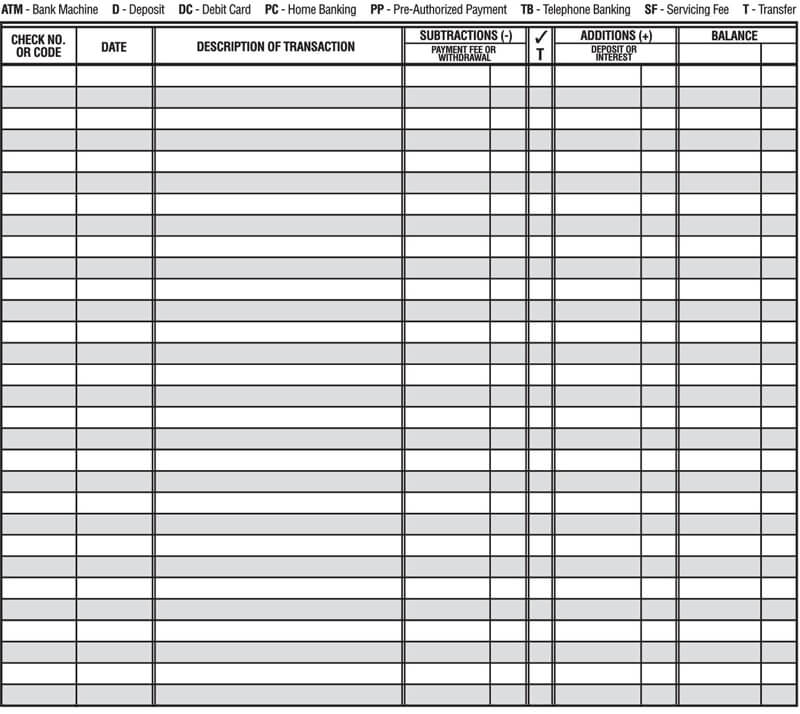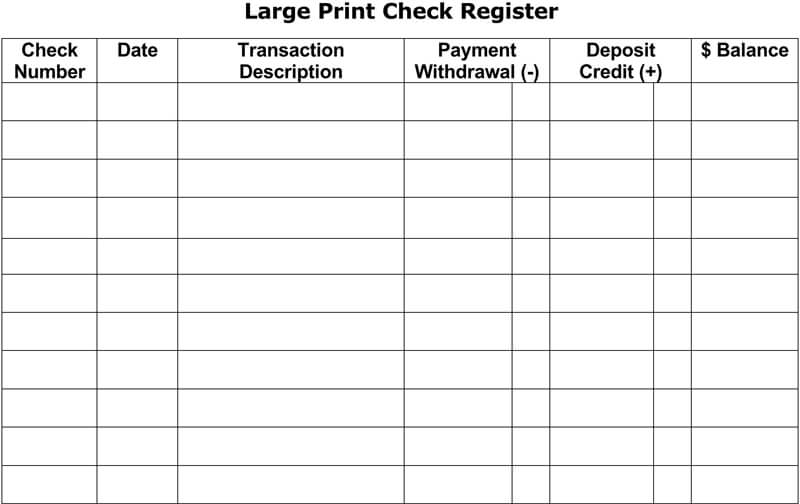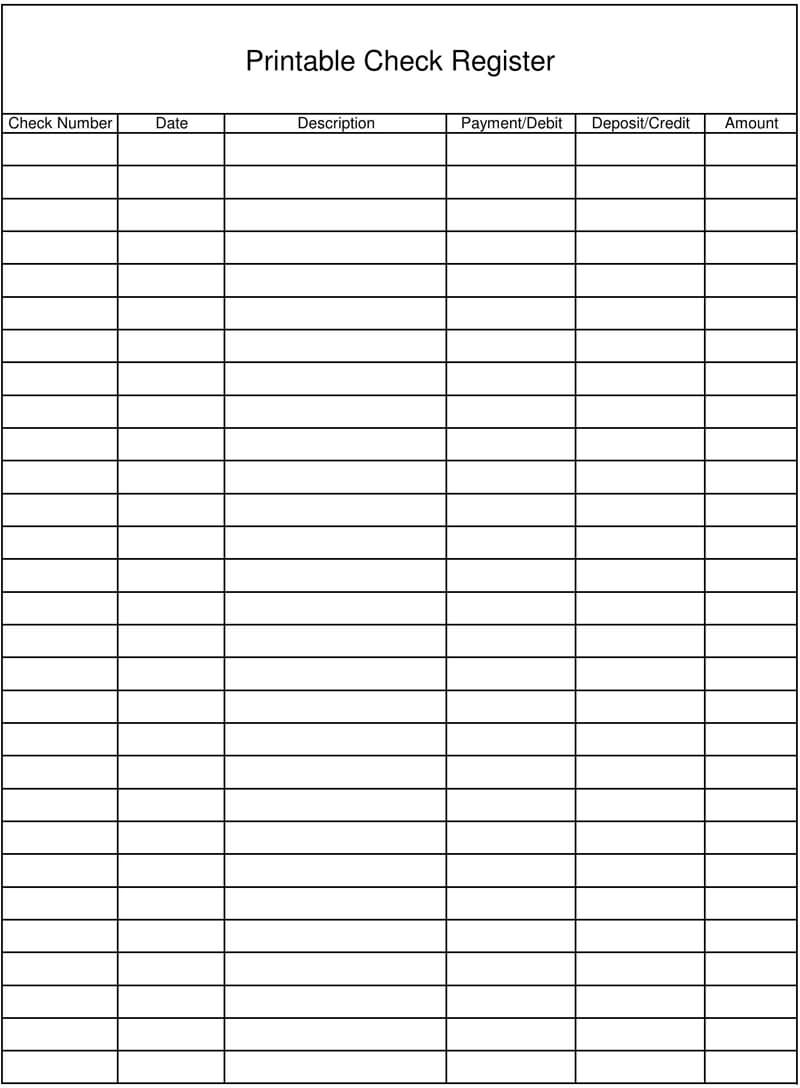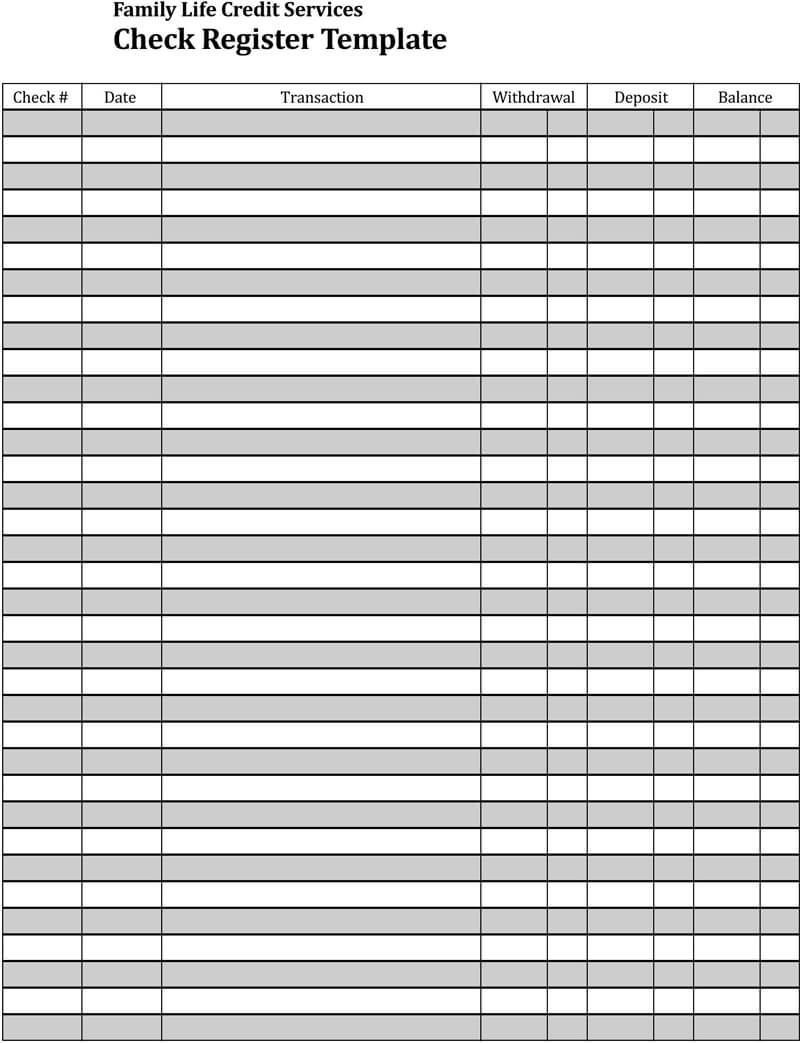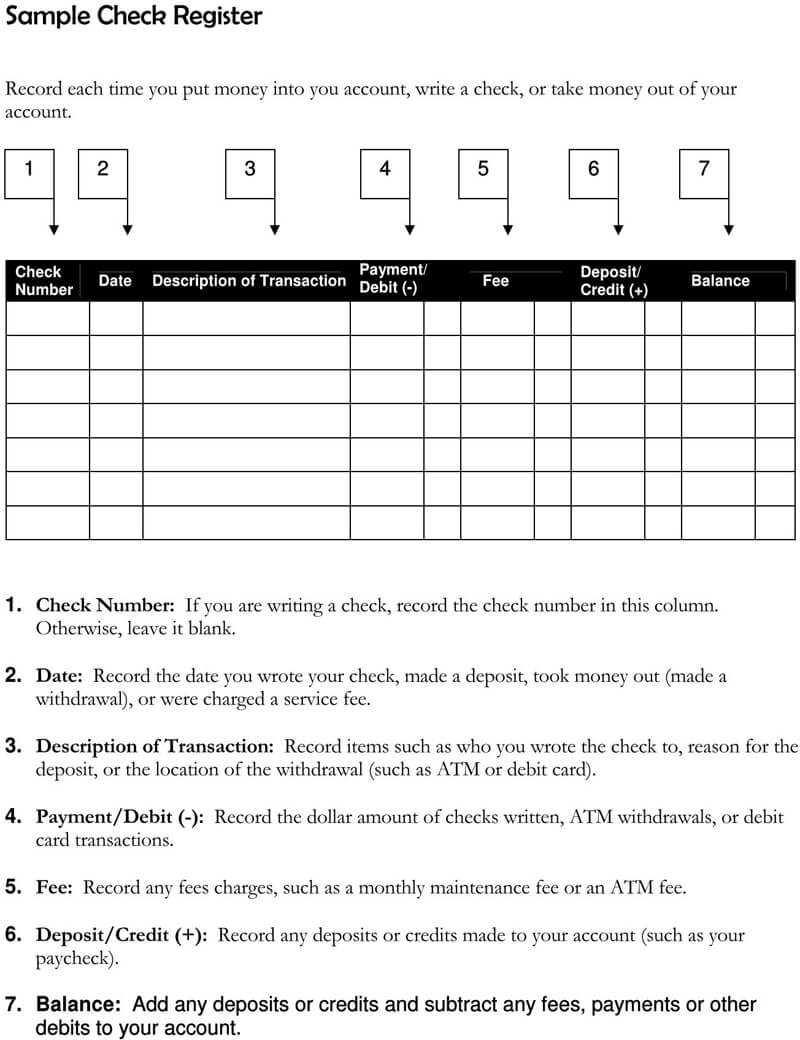A checkbook register, also referred to as a cash disbursement journal or a checkbook register template is a type of record kept by an individual or business’s internal accountants that itemizes all financial expenditures that the individual/business makes before those payments are posted in their general ledger.
Checkbook registers are usually reconciled with general ledger accounts, which are then used to develop financial statements for regular accounting periods.
Free Templates
Here are few free downloadable templates for you.
Overview and Purpose
Checkbook registers are usually included in checkbooks upon opening an account in a bank. Individuals and businesses use checkbook registers to calculate the running balance of their accounts to help them make and stay within their budgets. Ideally, checkbook registers help individuals and businesses with cash management by providing them with a clear and concise picture of their inventory expenses, rental costs, wages, and other internal and external expenses.
Any individual or business owner who is financially cautious should use a checkbook register to record all their transactions. In addition, they should record each transaction when they use their ATM cards and debit cards and all checks that they write or receive every month. The checkbook register will help them avoid bounced checks, insufficient balances, missed payments, help them identify any errors in their statements, and avoid penalties such as an overdraft or late fees.
Benefits of a Checkbook Register
Checkbook registers are used to record and track an individual/business’s finances. However, these are not the only uses or benefits of using a checkbook register.
Other benefits of using a checkbook register include:
Avoid overspending
A checkbook register can help an individual/business owner see if more cash is leaving their accounts than coming in and vice versa, enabling them to make adjustments to the business and spending to ensure that there is always a positive cash flow, thereby avoid overspending.
Budget better
Having an official payment record is an excellent way of making sense of one’s financial standing. By having a clear overview of the cash coming in and going out, one can make better budgeting decisions to see the actual balance in their accounts.
Keep transactions up to date
By keeping an updated record of all financial transactions in the checkbook register, i.e., cash, checks, debit or credit card and bank wire transactions, one can be able to keep an ongoing and accurate checking balance and make an informed decision on where they or their business budget needs more work and attention.
Catch identity theft
By frequently reconciling the accounts, i.e., checking account and general ledger accounts, one can identify disparities from their bank statements and report such cases on time to the relevant authorities, thereby avoiding or catching identity thieves.
Avoid bounced checks
By frequently updating the checkbook registers, one can be able to have a clear picture of their spending activities, and seeing their book balance make it easy to avoid bounced checks which may lead to negative credit scores, merchants’ refusal to supply goods or services, and litigations which may be expensive.
Sections in a Checkbook Register
A checkbook register contains a variety of columns to record an individual’s/businesses cash outflows. The columns include the details of the ledger account impacted, the date of each transaction, the check number issued, the total amount of the cash paid, the credit-control account showing the amount deducted from the creditor’s account, the taxes paid, and unique columns that help identify the type of transaction such as wages, rent paid, advertising, etc.
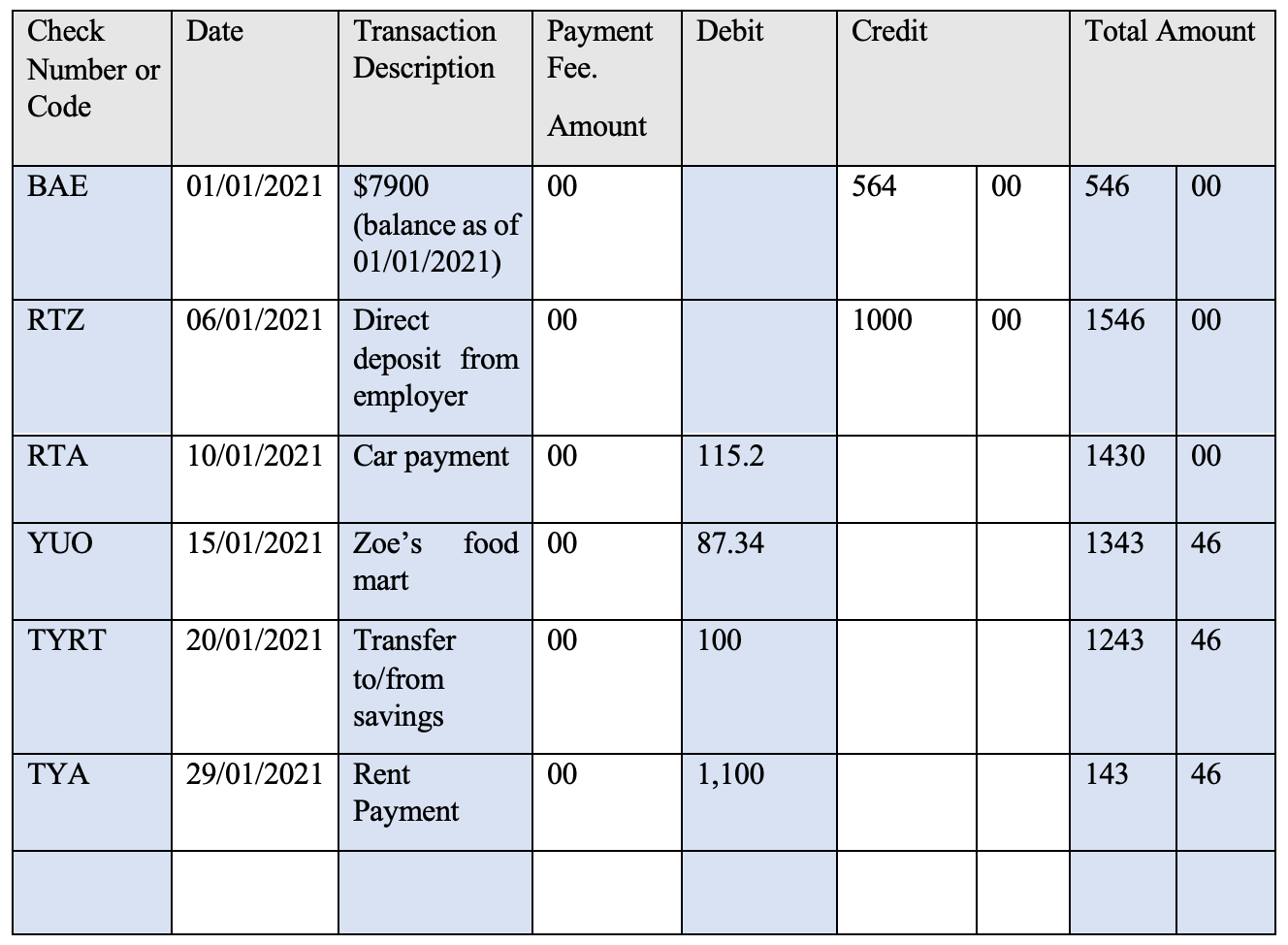
The information captured in these columns is added to arrive at a total sum. And then the information will be transferred to the general ledger.
Getting & Using a Checkbook Register Template
As an account/business manager, it is imperative to be detailed-oriented when keeping checkbook registers. To do this efficiently, there are various ways that one may utilize to create a checkbook register template with ease and record all transactions effectively.
Some of the commonly used ways include:
Recording transactions on paper
Manually creating a checkbook register template using a piece of paper is a cheap and convenient option, especially if one has few entries to maintain every month. However, this can be time-consuming and creates room for errors which may prove costly eventually.
Using a spreadsheet
A spreadsheet is another option that one may utilize when looking to create a checkbook register template. Although one will be required to manually key in the figures in the spreadsheets, depending on the type of spreadsheet used, one may set up formulas to help them in balancing calculations, thereby avoiding errors.
Making use of accounting software
Using accounting software to make a checkbook register template can help one keep accurate transaction details with little to no error. Using accounting software, one can pull out transactions from previous months or years with ease and get an in-depth understanding of their spending habits, thereby making sound decisions when preparing a budget. Although using accounting software is more expensive than other options available, using accounting software can help eliminate errors that may lead to incorrect balances, which may be costly to a business.
Ordering from an online check printer or bank
Banks and online check printers usually have checkbook registers. One can utilize this option and order online and save time and money. This option is recommended for individuals or small businesses with fewer transactions to record each month.
Buying from office supply stores
Another option that one can use is to buy a checkbook register from an office supply store. Office supply stores typically have a variety of checkbook registers that one can choose from and depending on the number of transactions one does every month, and they can find one best suited for them.
Key Take-Aways
- Irrespective of the type of business or financial position of an individual or a business, one needs to have a checkbook register to keep a record of each transaction made to have a clear understanding of how their money is being used—having an in-depth understanding of where, when and how money is used is a critical tool in one’s success.
- A clear record will also help when providing information to the IRS to file tax returns.
